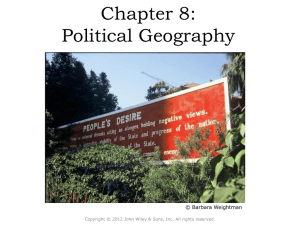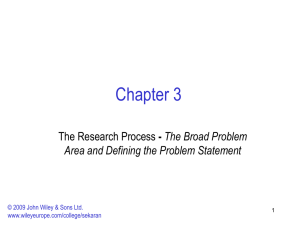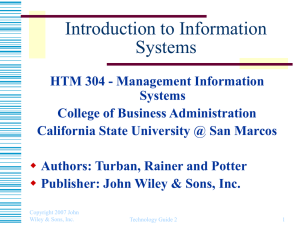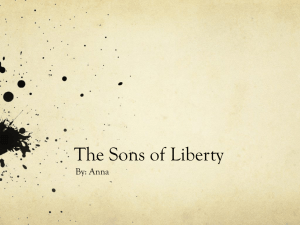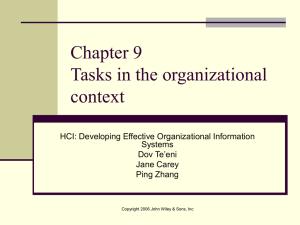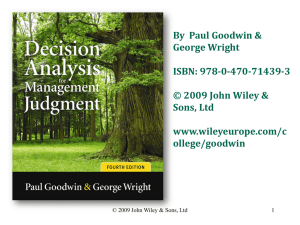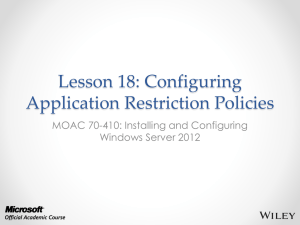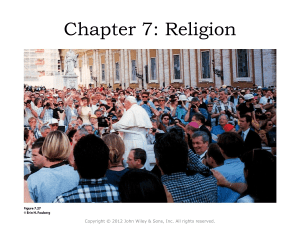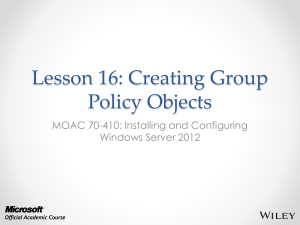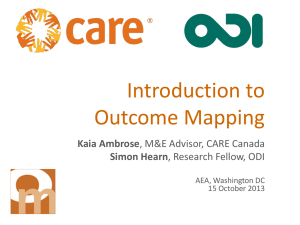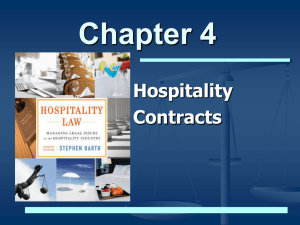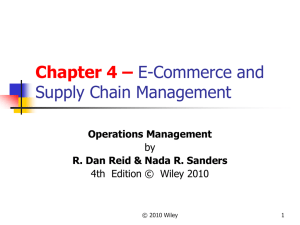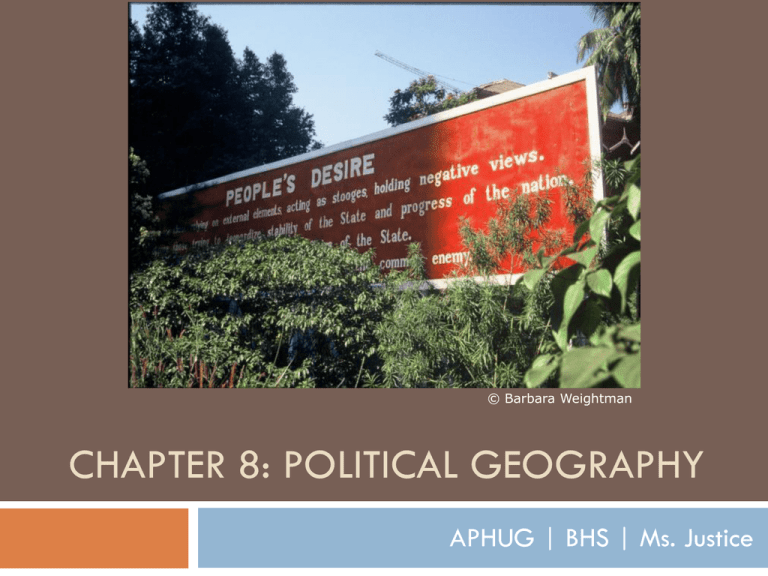
Concept Caching: Burma,
Myanmar
© Barbara Weightman
CHAPTER 8: POLITICAL GEOGRAPHY
APHUG | BHS | Ms. Justice
Key Questions: Chapter 8
8.1 How is space politically organized into
states and nations?
8.2 How do states spatially organize their
governments?
8.3 How are boundaries established, and why
do boundary disputes occur?
8.4 How does the study of geopolitics help us
understand the world?
8.5 What are supranational organizations,
and what are their implications for the
state?
Field Note:
Independence Is Better than Servitude
“I arrived in Ghana just after an
assassination attempt on the country’s
first president, Kwame Nkrumah. As I
drove through the capital city of
Accra in 1962, I stopped short when I
saw a statue of President Nkrumah in
the middle of the street. I have seen
plenty of statues of leaders in my
travels, but this one was unique.
Ghanaians had dressed their
hospital-ridden president in a hospital
gown and bandaged his head!”
© 2012 John Wiley & Sons, Inc. All rights reserved.
Key Question 8.1
How is space politically organized into
states and nations?
© 2012 John Wiley & Sons, Inc. All rights reserved.
How Is Space Politically Organized into
States and Nations?
Political geography is the study of the political
organization of the world.
A state is a politically organized territory with a
permanent population, a defined territory, and a
government.
© 2012 John Wiley & Sons, Inc. All rights reserved.
Homographs are words with different
pronunciation, meanings and origins but
the same spelling.
•bat - piece of sports equipment
OR an animal
•down – a lower place
OR soft fluff on a bird
•row – line
OR propel a boat
•wave – move the hand in greeting
OR sea water coming into
shore
How Is Space Politically Organized into
States and Nations?
Geographer Stuart Elden: The
modern concept of territory arose in
early modern Europe as a system
of political units came into being
with fixed, distinct boundaries and
at least a quasi-independent
government
The process by which this happens is
territoriality.
© 2012 John Wiley & Sons, Inc. All rights reserved.
How Is Space Politically Organized into
States and Nations?
Today, territoriality is tied to the
concept of sovereignty.
Sovereignty means having a
recognized right to control a
territory both politically and militarily.
Under international law, states are sovereign, and
they have the right to defend their territorial integrity
against incursion from other states.
© 2012 John Wiley & Sons, Inc. All rights reserved.
4 Level Analysis
(Fig. 8.2, p 250-251)
How Is Space Politically Organized into
States and Nations?
The Modern State Idea
Idea of the state appeared in various forms across
world regions 400 or 500 years ago
The European state idea most influenced the
development of the modern state system
Emerging political state was accompanied by
mercantilism, which led to the
accumulation of wealth through
plunder, colonization, and the
protection of home industries and
foreign markets
How Is Space Politically Organized into
States and Nations?
The Modern State Idea
The Peace of Westphalia,
negotiated in 1648, marks the
beginning of the modern state
system.
In the Westphalian system it became the territory that
defined the society.
Territory is treated as a fixed element of political
identification, and states define exclusive,
nonoverlapping territories.
How Is Space Politically Organized into
States and Nations?
Nations
Nation is a culturally defined term, and few people agree on
exactly what it means.
The term was originally meant to refer to a group of people
who think of themselves as one based on a sense of shared
culture and history, and who seek some degree of politicalterritorial autonomy.
All nations are ultimately mixtures of
different peoples.
A nation is identified by its own membership;
therefore, we cannot simply define a nation
as the people within a territory
© 2012 John Wiley & Sons, Inc. All rights reserved.
How Is Space Politically Organized into
States and Nations?
Nation-State
• A nation-state is a politically organized area in which
nation and state occupy the same space.
• The goal of creating nation-states
dates to the French Revolution:
democracy
• Key problem:
• assumes the presence of
reasonably well-defined, stable
nations living contiguously in discrete territories.
How Is Space Politically Organized into
States and Nations?
Nation-State
When people have a strong sense of nationalism, they
have a loyalty to, and a belief in, the nation itself.
A state, in contrast, seeks to promote a sense of
nationhood that coincides with its own borders.
States provide security,
infrastructure, and goods
and services for their citizens.
Guest Field Note:
Cluj-Napoca, Romania
“To Hungarians, Transylvania is significant because it was an
important part of the Hungarian Kingdom for a thousand years.
Many of their great leaders were born and buried there, and
many of their
great churches,
colleges, and
architectural
achievements are
located there too.”
How Is Space Politically Organized into
States and Nations?
Multistate Nations, Multinational States, and
Stateless Nations
Nearly every state in the world is a multinational state, a state
with more than one nation inside its borders.
When a nation stretches across borders and across states, the
nation is called a multistate nation.
When multiple nations or states claim
attachments to the same piece of
territory, the potential for conflict
is significant.
© 2012 John Wiley & Sons, Inc. All rights reserved.
How Is Space Politically Organized into
States and Nations?
Another
complication that
arises from the lack
of fit between
nations and states
is that some nations
do not have a
state; they are
stateless nations.
Ex.: the Kurds
How Is Space Politically Organized into
States and Nations?
European Colonialism and the Diffusion of the
Nation-State Model
Europe exported its concepts of state, sovereignty, and the desire
for nation-states to much of the rest of the world through two waves
of colonialism.
16th c. colonialism – Spain, Portugal, Britain, France, Belgium, and
the Netherlands
Late 19th c. colonialism – Britain,
France, Germany, the Netherlands,
Belgium, and Italy
Despite the end of colonialism, the
political organization of space and the
global world economy persist.
(Fig. 8.8, p 260-261)
How Is Space Politically Organized into
States and Nations?
Construction of the Capitalist World Economy
European states and areas dominated by European migrants
emerged as the major centers of economic and political activity.
Europeans extracted wealth from colonies and put colonized
peoples in a position of subservience.
Colonialism knitted together the economies of widely separated
areas, which gave birth to a world economy.
Understanding the world economy is like
analyzing a pointillist painting:
How Is Space Politically Organized into
States and Nations?
Construction of the Capitalist
World Economy
Social scientists seek to see how each “dot” fits into the whole.
Proponents of world-systems theory (based on the work of
Immanuel Wallerstein) view the world as much more than the
sum total of the world’s states:
to understand any state we must also
understand its spatial and functional
relationships within the world economy.
© 2012 John Wiley & Sons, Inc. All rights reserved.
How Is Space Politically Organized into
States and Nations?
Construction of the Capitalist World Economy
There are three basic tenets of world-systems theory, as
Wallerstein defines them:
1. The world economy has one market and a global
division of labor.
• Capitalism: in the world economy, individuals,
corporations, and states produce goods and services
that are exchanged for profit.
• Commodification is the process of placing
a price on a good, service, or idea and then
buying, selling, and trading that item.
© 2012 John Wiley & Sons, Inc. All rights reserved.
How Is Space Politically Organized into
States and Nations?
Construction of the Capitalist World Economy
2. Although the world has multiple states, almost everything takes
place within the context of the world economy:
• Colonialism played a major role in establishing this system
and facilitating the construction of an interdependent global
economy.
© 2012 John Wiley & Sons, Inc. All rights reserved.
How Is Space Politically Organized into
States and Nations?
Construction of the Capitalist World Economy
3. The world economy has a three-tier structure:
• Core is where one is most likely to find higher levels of
education, higher salaries, and more technology
• Periphery: processes associated with a more marginal position in
the world economy
• Semiperiphery: places where core
and periphery processes are both
occurring
© 2012 John Wiley & Sons, Inc. All rights reserved.
How Is Space Politically Organized into
States and Nations?
How Is Space Politically Organized into
States and Nations?
World-Systems and Political Power
Each state is theoretically sovereign, but not all states have the
same ability to influence others or achieve their political goals.
The Enduring Impact of the Nation-State Idea
Regardless of many problems and lack of simple solutions to
nation and state conflicts, the European territorial state idea
became the world model and still shapes the political organization
of space worldwide.
Imagine you are the leader of a newly independent
state in Africa or Asia. Determine what your
government can do to build a nation that corresponds
with the borders of your state. Consider the roles of
education, government, military, and culture in your
exercise in nation-building.
© 2012 John Wiley & Sons, Inc. All rights reserved.
Key Question 8.2
How do states spatially organize their
governments?
© 2012 John Wiley & Sons, Inc. All rights reserved.
How Do States Spatially Organize Their
Governments?
Political geographer Richard Hartshorne described
the forces within the state that unify the people as
centripetal and the forces that divide them as
centrifugal.
centripetal
centrifugal
peace
fighting
According to Hartshorne, whether a state continues to
exist depends on the balance between centripetal
and centrifugal forces.
How Do States Spatially Organize Their
Governments?
Form of Government
Unitary governments: centralized states whose
administrative framework is designed to ensure the
central government’s authority over all of the state:
Ex. France
In a strong federal system, the regions have much control over
government policies and funds (Ex. United States), and in a weak
federal system, the central government retains a significant measure
of power.
Federalism accommodates regional interests
by vesting primary power in provinces, States,
or other regional units over all matters except
those explicitly given to the central government.
How Do States Spatially Organize Their
Governments?
Devolution
•
•
•
Devolution is the movement of power from the central
government to regional governments within the state.
Sometimes devolution is achieved by reworking a constitution to
establish a federal system that recognizes the permanency of the
regional governments.
In other places, governments
devolve power without altering
constitutions, almost as
an
experiment.
© 2012 John Wiley & Sons, Inc. All rights reserved.
Guest Field Note
Interstate-40, near Blackwell, Arkansas.
“In most states in the U.S., a ‘dry county’ might cause one to
think of a place where there is very litttle rain. But in the
southern part of the U.S., there are many dry counties—that is,
counties with laws forbidding the sale of packaged alcohol. In
the late 1800s and early 1900s, keeping counties dry was
much easier than it is today. A hundred years ago, it took up to
a day to travel to the next town or city on very poor roads.
Today, with cars traveling 70 MPH on an interstate, the same
trip takes a matter of minutes. Why would counties continue to
ban alcohol sales today? Many of the reasons are cultural. Of
the Arkansas residents who attend church, most are Baptists
(see Figure 7.28) or other Protestant denominations. Many of
these churches prohibit consumption of alcoholic beverages.
The Arkansas legislature supports dry counties by requiring
counties that want to sell packaged liquor to get 38 percent of
the voters in the last election to sign a petition. It only takes 10
percent of that voter pool to get any other issue on the ballot.
Today, however, many dry counties in Arkansas are known as
‘damp.’ Damp counties are those where
restaurants, country clubs and social organizations
can apply and receive a license to serve alcohol by
the drink. This arrangement seems counterintuitive to
the idea of a dry county. But business and economic
development authorities want damp counties to
encourage investment and growth in the local
economy.”
Credit: Paul T. Gray, Jr.
How Do States Spatially Organize Their
Governments?
Electoral Geography
Partitioning of state territory into electoral districts.
Reapportionment: process by which districts are moved according
to population shifts so that each district has about the same
number of people.
Redistricting for advantage, or to attain certain political ends, is
known as gerrymandering
Can provide representation for minorities
Can provide unfair advantage for certain parties/candidates
© 2012 John Wiley & Sons, Inc. All rights reserved.
Field Note
“As I drove along a main road through a Honolulu suburb I noticed that numerous houses had
the Hawai’i State flag flying upside down. I knocked on the door of this house and asked the
homeowner why he was treating the State flag this way. He invited me in and we talked for
more than an hour. ‘This is 1993,’ he said, ‘and we native Hawai’ians are letting the State
government and the country know that we haven’t forgotten the annexation by the United
States of our kingdom. I don’t accept it, and we want our territory to plant our flag and keep
the traditions alive. Why don’t you drive past the royal palace, and you’ll see that we mean
it.’ He was right. The Iolani Palace, where the Hawai’ians ’ last monarch, Queen Liliuokalani,
reigned until she was deposed by a group of American businessmen in 1893, was draped in
black for all of Honolulu to see. Here was devolutionary stress on American soil.”
© 2012 John Wiley & Sons, Inc. All rights reserved.
Choose an example of a devolutionary movement and
consider which geographic factors favor, or work
against, greater autonomy (self-governance) for the
region. Would granting the region autonomy strengthen
or weaken the state in which the region is currently
situated?
© 2012 John Wiley & Sons, Inc. All rights reserved.
Key Question 8.3
How are boundaries established, and
why do boundary disputes occur?
© 2012 John Wiley & Sons, Inc. All rights reserved.
How Are Boundaries Established, and Why Do
Boundary Disputes Occur?
A boundary between states is
actually a vertical plane that cuts
through the rocks below (called
the subsoil) and the airspace
above, dividing one state from
another (Fig. 8.18).
© 2012 John Wiley & Sons, Inc. All rights reserved.
How Are Boundaries Established, and
Why Do Boundary Disputes Occur?
Establishing Boundaries
States typically define the boundary in a treaty-like legal
document in which actual points in the landscape or points of
latitude and longitude are described.
Cartographers delimit the boundary by drawing on a map.
If either or both of the states so desire, they can demarcate the
boundary by using steel posts, concrete pillars, fences, walls, or
some other visible means to mark the boundary on the ground.
How Are Boundaries Established, and
Why Do Boundary Disputes Occur?
Types of Boundaries
Geometric boundaries are drawn
using grid systems such as latitude
and longitude or township and
range
Physical-political boundaries follow an agreed upon
figure in the natural landscape
•
Ex.: The center point of a river or crest
of a mountain range.
How Are Boundaries Established, and
Why Do Boundary Disputes Occur?
Types of Boundary Disputes
Definitional boundary disputes focus on the legal language of the
boundary agreement.
Locational boundary disputes center on the delimitation and possibly
the demarcation of the boundary. The definition is not in dispute, but its
interpretation is.
Operational boundary disputes involve neighbors who differ over the
way their border should function.
Allocational boundary disputes are becoming more common as the
search for resources intensifies.
People used to think physical-political boundaries
were always more stable than geometric
boundaries. Through studies of many places,
political geographers have confirmed that this idea
is false. Construct your own argument explaining
why physical-political boundaries can create just as
much instability as geometric boundaries.
© 2012 John Wiley & Sons, Inc. All rights reserved.
Key Question 8.4
How does the study of geopolitics help
us understand the world?
© 2012 John Wiley & Sons, Inc. All rights reserved.
How Does the Study of Geopolitics Help Us
Understand the World?
Classical Geopolitics
Geopolitics is the interplay
among geography, power,
politics, and international
relations on Earth’s surface.
Late 19th century/early 20th century geopoliticians were usually
either part of the German school or the British/American school.
How Does the Study of Geopolitics Help Us
Understand the World?
The German School
Friedrick Ratzel: the state resembles a
biological organism whose life cycle extends
from birth through maturity and, ultimately,
decline and death.
“Nourishment” for the state is provided through
acquisition of territories that provide adequate
space for the members of the state’s dominant
nation to survive – lebensraum (Hitler embraced
this idea in the 1930s)
How Does the Study of Geopolitics Help Us
Understand the World?
The British/American School
• Sir Halford J. Mackinder: land-based power, not sea
power, would ultimately rule the world.
• Warned that if the pivot area in Eurasia (the “heartland”)
became influential in Europe a great empire could be
formed.
Influence of Geopoliticians
on Politics
NATO
How Does the Study of Geopolitics Help Us
Understand the World?
Critical Geopolitics
Influence and reinforce political behaviors and policy
choices; affects what happens and how most people
interpret what happens.
Examples:
President Reagan referred to the Soviet Union as the “Evil
Empire,” and the U.S. as “the shining
city on a hill”
President Bush said, after Sept. 11,
“…nations are either with us or against
us in the war on terror.”
How Does the Study of Geopolitics Help Us
Understand the World?
Geopolitical World Order
Cold War: bipolar, with Soviet versus West alliances
New World Order: Global cooperation to bring
discipline to rogue states
Unilateralism: one country (e.g., United
States) in position of dominance, with
other countries following its lead
Key Question 8.5
What are supranational organizations,
and what are their implications for the
state?
© 2012 John Wiley & Sons, Inc. All rights reserved.
What Are Supranational Organizations, and
What Are Their Implications for the State?
Supranational organization: three or more states that
forge an association and form an administrative structure
for mutual benefit and in pursuit of shared goals
League of Nations to United Nations
• Started with the League of Nations in 1919
• United Nations (UN), FAO, WTO, UNESCO
Regional Supranational Organizations
•
Benelux, Marshall Plan
© 2012 John Wiley & Sons, Inc. All rights reserved.
4 Level Analysis
(Fig. 8.23, p 282-283)
What Are Supranational Organizations, and
What Are Their Implications for the State?
European Union
•
European Union (EU) formed in 1992.
Not all EU member states are
currently a part of the euro-zone,
but the euro has emerged as a
significant global currency.
© 2012 John Wiley & Sons, Inc. All rights reserved.
Figure 8.22
Select Supranational Organizations. Data from: Crawford, Jo-Ann and Roberto V. Fiorentino “Changing
Landscape of Regional Trade Agreements,” World Trade Organization.
What Are Supranational Organizations, and
What Are Their Implications for the State?
How Does Supranationalism Affect the State?
•
•
•
•
Economics associations: NAFTA, CIS, etc.
European Union: “taken on a life of its own”
Deterritorialization: globalization, networked
communities, etc. undermine the state’s traditional
territorial authority
Reterritorialization: the state is moving to solidify
control over its territory
© 2012 John Wiley & Sons, Inc. All rights reserved.

